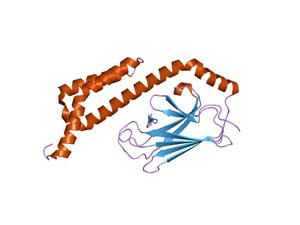Ember
Senior Member
- Messages
- 2,115
By National CFIDS Foundation
Published: Tuesday, Feb. 25, 2014 - 9:02 am
Published: Tuesday, Feb. 25, 2014 - 9:02 am
Read more articles by National CFIDS FoundationBOSTON, Feb. 25, 2014 -- /PRNewswire-USNewswire/ -- The National CFIDS Foundation (NCF) has announced its latest research findings for chromosome damage in its fifteen-patient cohort. According to Gail Kansky, NCF President, "We feel that our grant funding for Dr. Henry Heng has really paid some big dividends due to the fact that our selected patient samples displayed several key chromosome abnormalities." According to Kansky, "I would like physicians and patients alike to realize that these results indicate that this disabling disease is not malingering nor is it simple fatigue. It certainly isn't 'all in your head' either. In fact, chromosome damage can't be fixed by graded exercise! Our patients are very ill and they are most concerned about cancer development and rightly so."
Dr. Heng, who headed up this research, is an Associate Professor of Molecular Medicine and Genetics at Wayne State University. Heng was the principle research investigator involved in the Discovery Channel's "Conspiracy Test" documentary in 2007. Heng had tested five Gulf War veterans for chromosome damage using spectral karyotyping. He had subsequently identified chromosome damage, at much higher levels than controls, in each one of them. Interestingly, every one of those veterans had previously tested positive for urinary uranium radionuclides.
In 2010, the NCF announced its link between Chronic Fatigue Immune Dysfunction Syndrome (CFIDS) and low-level radiation exposure. According to Alan Cocchetto, NCF's Medical Director, "We had tested a group of patients for the presence of specific internal radionuclides. This research data was formally analyzed by Dr. Carmel Mothersill, Canada Research Chair in Environmental Radiobiology and Professor of Medical Physics and Applied Radiation Sciences at McMaster University. This same patient group then became the NCF's patient cohort that was subsequently tested for chromosome damage by Dr. Heng."
Using spectral karyotyping, Heng had found that 100% of the NCF's patient samples had an order of magnitude greater chromosome breakage than controls. In fact, these patients had greater breakage than those veterans tested in "Conspiracy Test." Furthermore, 53% of the NCF's cohort had been identified as having chromosome translocations, often considered to be a recognized stepping stone as part of the cancer initiation process. In addition, Heng had also identified a new type of chromosome damage that was present in the NCF's samples. Heng's research was funded by both the National CFIDS Foundation and the Nancy Taylor Foundation for Chronic Diseases.
According to the NCF, Chronic Fatigue Syndrome (CFS) is also known as Chronic Fatigue Immune Dysfunction Syndrome (CFIDS) as well as Myalgic Encephalomyelitis (ME). Founded in 1997, the goals of the NCF are to help fund medical research to find a cause and to expedite appropriate treatments for CFIDS/ME. The NCF, an all volunteer 501(c)(3) federally approved charity, is funded solely by individual contributions. Additional information can be found on the Foundation's website at www.ncf-net.org or in The National Forum quarterly newsletter. The NCF can be reached by phone at 781-449-3535.
SOURCE National CFIDS Foundation



